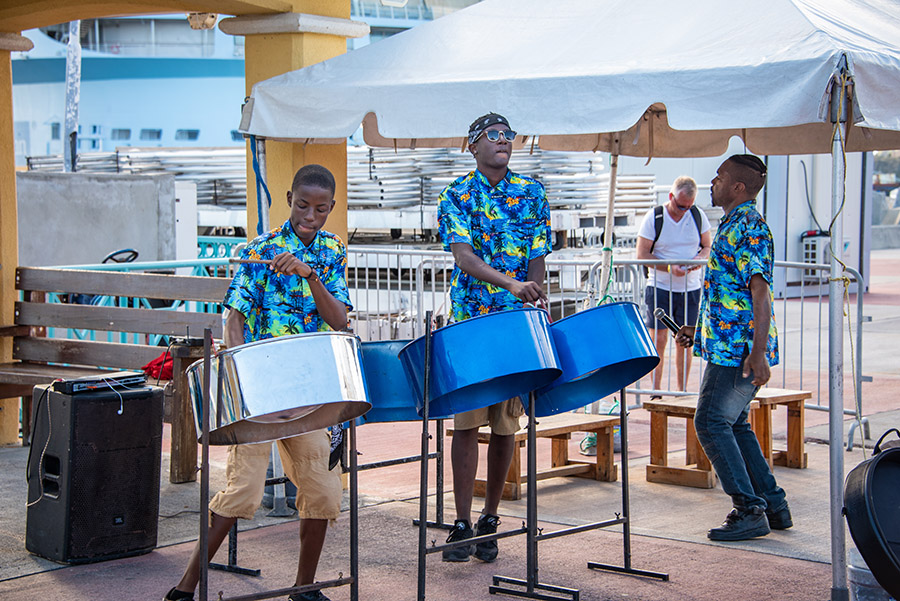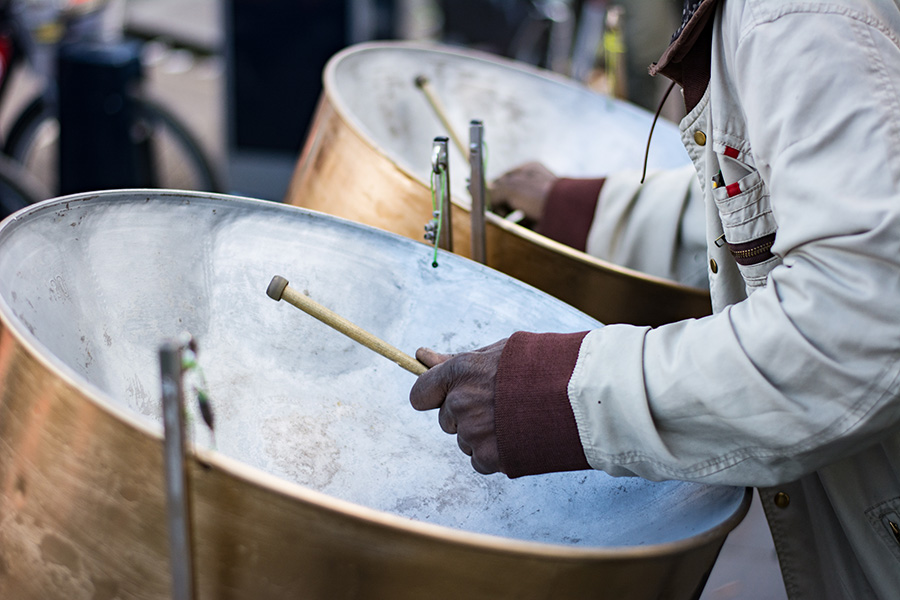National Instrument
Steelpan
A member of the percussion group of instruments, the steelpan is Trinidad and Tobago’s national instrument. Its origins are steeped in history and human ingenuity.
During colonial times in the early twentieth century, Trinidad’s French-speaking Creole population chiefly inhabited the outer regions of Port of Spain, namely the hill communities of Belmont and Laventille. In the midst of a World War, the British government banned all Carnival activities, including use of the infamous tambu bamboo instruments.
The tambu bamboo consisted of a long, upright strips of bamboo that were repeatedly and rhythmically struck on the ground. This produced sounds of varying pitches that could be arranged in melodies, making it suitable for the formation of bands. This practice also came about because the British had earlier banned drumming, a popular pastime amongst the French Creoles. The new sound of the bamboo replicated the percussion beats of the banned drums.
So naturally when the tambu bamboo was banned, the resident innovators were poised to adapt in the face of resistance. From as early as the 1930s, the first incarnations of the steelpan were being devised in the hills of Laventille. It was discovered that hitting a piece of metal with a stick could produce familiar and workable notes. A decade of trial and error and then, in 1945, steelpans finally made their debut on the streets of Port of Spain during Carnival celebrations after the war.
It has since become an intrinsic facet of our national Carnival celebrations, with its own Panorama competition. Well-known steelpan bands include the Desperados, Renegades, All Stars, Phase II Pan Groove, and Exodus. The instrument with the humble genesis is now internationally acclaimed and beloved.




